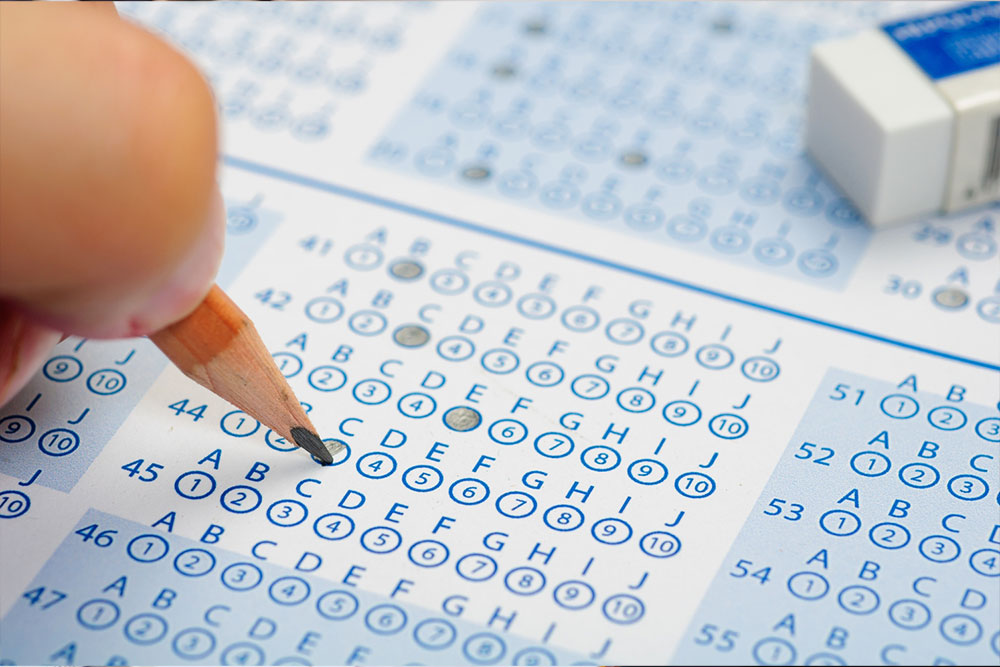Ultimate Guide: Mastering the SAT Exam with Proven Strategies
This comprehensive guide provides students with proven strategies to excel in the SAT exam. Covering test structure, effective study practices, and resource utilization, it helps aspirants maximize their scores and confidently approach test day. Perfect for high school students aiming for top colleges, this article offers practical tips to enhance preparation and reduce anxiety. Emphasizing regular practice, error analysis, and collaborative studying, it is a must-read for future college applicants seeking academic excellence.

Ultimate Guide: Mastering the SAT Exam with Proven Strategies
The SAT stands as one of the most significant standardized tests for college admissions in the United States. It plays a crucial role in shaping students' academic futures by providing a common benchmark for assessing college readiness. The exam evaluates critical skills across two main areas—Mathematics and Evidence-Based Reading & Writing—making preparation essential for students aiming to secure spots at top-tier universities or qualify for scholarships. This comprehensive guide explores essential strategies that can help students excel on the SAT, from understanding its structure to effective study techniques.
The SAT typically lasts about three hours and consists of two core sections—Evidence-Based Reading & Writing (EBRW) and Mathematics—each scored on a scale from 200 to 800 points. The combined score ranges from 400 to 1600, representing a standardized measure of a student’s academic capabilities and readiness for college-level work. To maximize performance, students must adopt targeted preparation strategies, practice regularly, and develop a deep understanding of the exam’s format and content.
Understanding the SAT Exam Structure and Content
The SAT is designed not just to assess knowledge but also to evaluate critical thinking, problem-solving, and time management skills. Knowing the breakdown of the test components allows students to tailor their study plans effectively—focusing more on their areas of weakness and honing their strengths.
The main components of the SAT include:
Evidence-Based Reading & Writing (EBRW): This section comprises 52 questions that test reading comprehension, vocabulary in context, and editing skills. The duration is 65 minutes, requiring students to read passages and answer questions that assess their understanding and analytical abilities.
Math: The Math section is divided into two parts: one allowing calculator use and one without. It contains 38 questions that cover algebra, geometry, trigonometry, and data analysis, with a time limit of 55 minutes for the calculator portion and 25 minutes for the non-calculator section.
Each section is scored separately, with an aim to achieve a balanced performance across all areas for the best composite score.
Effective Strategies for SAT Preparation
Preparing for the SAT involves a combination of understanding the exam format, practicing effectively, and developing test-taking strategies. Here are some proven tips for students serious about improving their scores.
1. Master the Test Format and Question Types
Understanding the structure, timing, and types of questions encountered on the SAT can significantly boost confidence and efficiency. Familiarity with question formats helps students anticipate what to expect and reduces surprises on test day.
The Reading section involves 52 questions, requiring about 65 minutes—roughly 1.25 minutes per question. Reading comprehension questions range from interpreting passages to analyzing arguments.
The Writing and Language section includes 44 questions across grammar, sentence structure, vocabulary, and editing tasks, with a 35-minute window.
The Math section includes two parts: calculator and no-calculator, with a total of 58 questions to be completed in 80 minutes. Topics include algebra, geometry, trigonometry, and data analysis.
2. Consistent Practice with Realistic Mock Tests
Practice is the cornerstone of successful SAT prep. Using official practice tests or reputable mock exams simulates the real test environment, helping students build familiarity and confidence.
Build Test Familiarity: Repeatedly taking practice exams helps students understand question patterns, improves timing, and boosts overall score potential.
Identify and Address Weaknesses: Detailed analysis of incorrect answers highlights areas needing improvement, allowing students to focus their study time efficiently.
Enhance Time Management: Regular practice teaches effective pacing, ensuring students can complete sections within allocated timeframes.
Reduce Testing Anxiety: Familiarity with the test setting and question types diminishes stress, leading to calmer, more focused performance on exam day.
3. Critical Analysis of Practice Errors
Going over mistakes meticulously after each practice session helps students understand their errors—whether due to misconceptions, careless mistakes, or time misallocation—and strategize for future attempts.
4. Utilize Quality Prep Materials and Formal Courses
Students can choose from a variety of resources, including prep books, online platforms, and classroom courses, to supplement their study routines. These resources often include practice questions, strategies, and feedback sessions that accelerate improvement. Starting preparation at least three to six months prior to the exam ensures ample time for comprehensive review and practice.
5. Engage in Collaborative Study Groups
Studying with peers enhances accountability and provides diverse perspectives on challenging questions. Group discussions enable students to clarify doubts, share effective strategies, and build confidence, ultimately leading to a stronger performance.
Achieving a high score on the SAT requires dedication, strategic planning, and consistent effort. By understanding the exam structure, practicing under realistic conditions, analyzing mistakes, and leveraging available resources, students can significantly improve their chances of success and secure their future academic opportunities.




